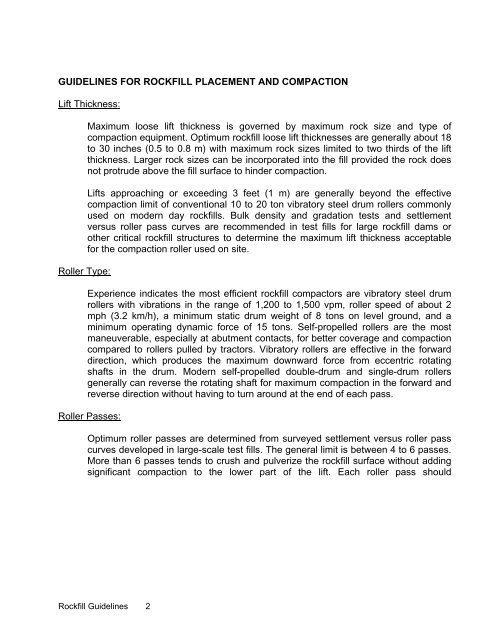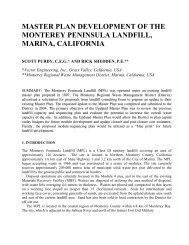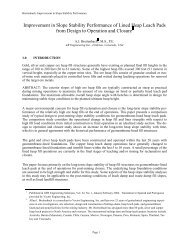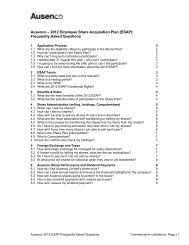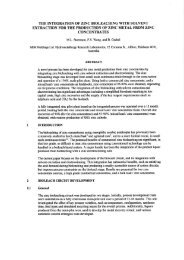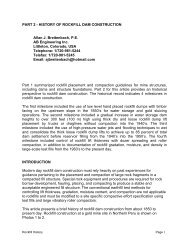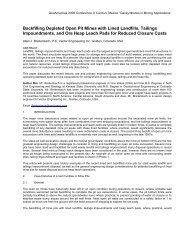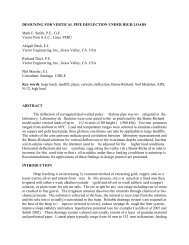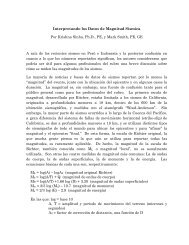Summary of Rockfill Placement and Compaction ... - Ausenco
Summary of Rockfill Placement and Compaction ... - Ausenco
Summary of Rockfill Placement and Compaction ... - Ausenco
Create successful ePaper yourself
Turn your PDF publications into a flip-book with our unique Google optimized e-Paper software.
GUIDELINES FOR ROCKFILL PLACEMENT AND COMPACTIONLift Thickness:Roller Type:Maximum loose lift thickness is governed by maximum rock size <strong>and</strong> type <strong>of</strong>compaction equipment. Optimum rockfill loose lift thicknesses are generally about 18to 30 inches (0.5 to 0.8 m) with maximum rock sizes limited to two thirds <strong>of</strong> the liftthickness. Larger rock sizes can be incorporated into the fill provided the rock doesnot protrude above the fill surface to hinder compaction.Lifts approaching or exceeding 3 feet (1 m) are generally beyond the effectivecompaction limit <strong>of</strong> conventional 10 to 20 ton vibratory steel drum rollers commonlyused on modern day rockfills. Bulk density <strong>and</strong> gradation tests <strong>and</strong> settlementversus roller pass curves are recommended in test fills for large rockfill dams orother critical rockfill structures to determine the maximum lift thickness acceptablefor the compaction roller used on site.Experience indicates the most efficient rockfill compactors are vibratory steel drumrollers with vibrations in the range <strong>of</strong> 1,200 to 1,500 vpm, roller speed <strong>of</strong> about 2mph (3.2 km/h), a minimum static drum weight <strong>of</strong> 8 tons on level ground, <strong>and</strong> aminimum operating dynamic force <strong>of</strong> 15 tons. Self-propelled rollers are the mostmaneuverable, especially at abutment contacts, for better coverage <strong>and</strong> compactioncompared to rollers pulled by tractors. Vibratory rollers are effective in the forwarddirection, which produces the maximum downward force from eccentric rotatingshafts in the drum. Modern self-propelled double-drum <strong>and</strong> single-drum rollersgenerally can reverse the rotating shaft for maximum compaction in the forward <strong>and</strong>reverse direction without having to turn around at the end <strong>of</strong> each pass.Roller Passes:Optimum roller passes are determined from surveyed settlement versus roller passcurves developed in large-scale test fills. The general limit is between 4 to 6 passes.More than 6 passes tends to crush <strong>and</strong> pulverize the rockfill surface without addingsignificant compaction to the lower part <strong>of</strong> the lift. Each roller pass should<strong>Rockfill</strong> Guidelines 2


